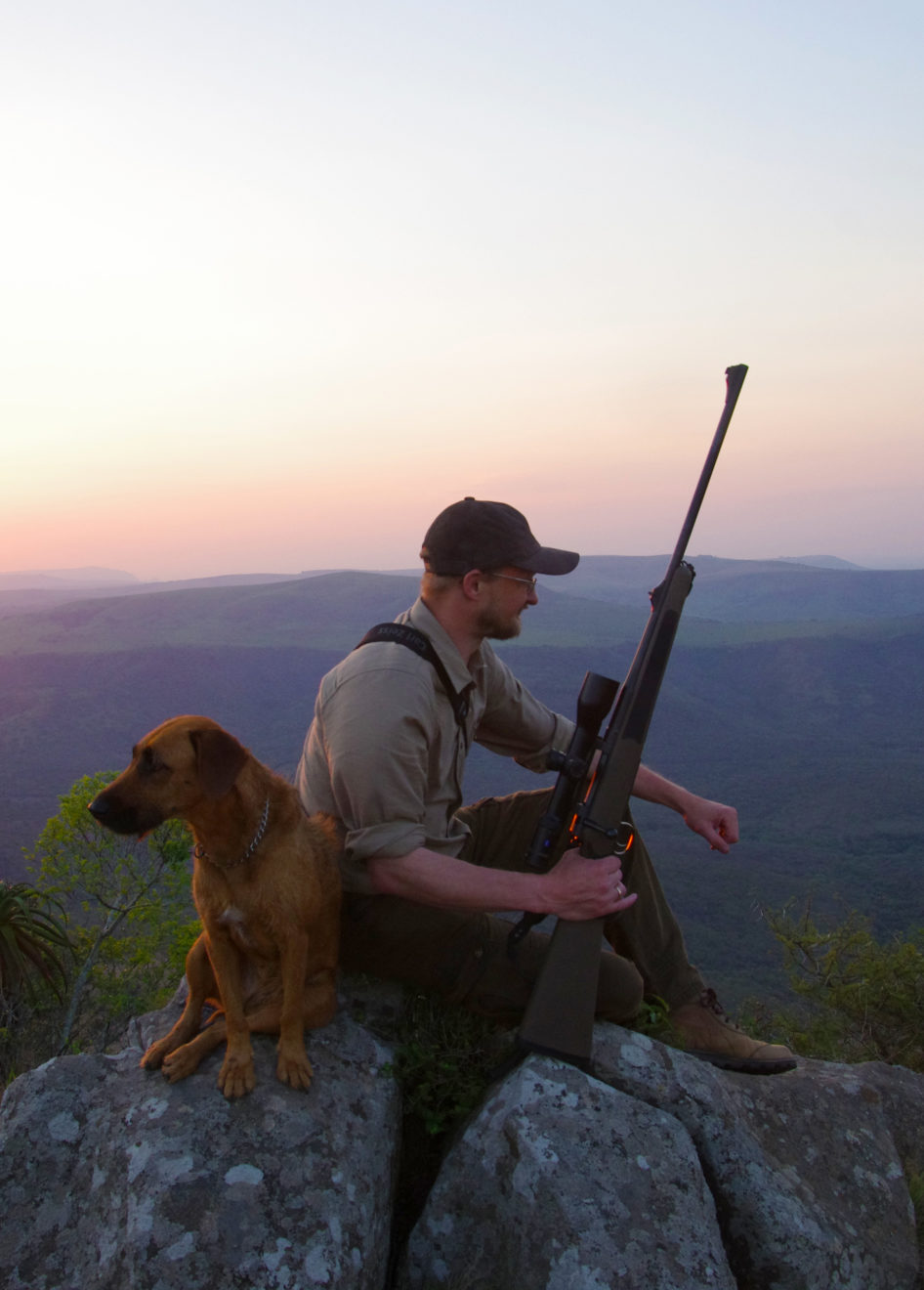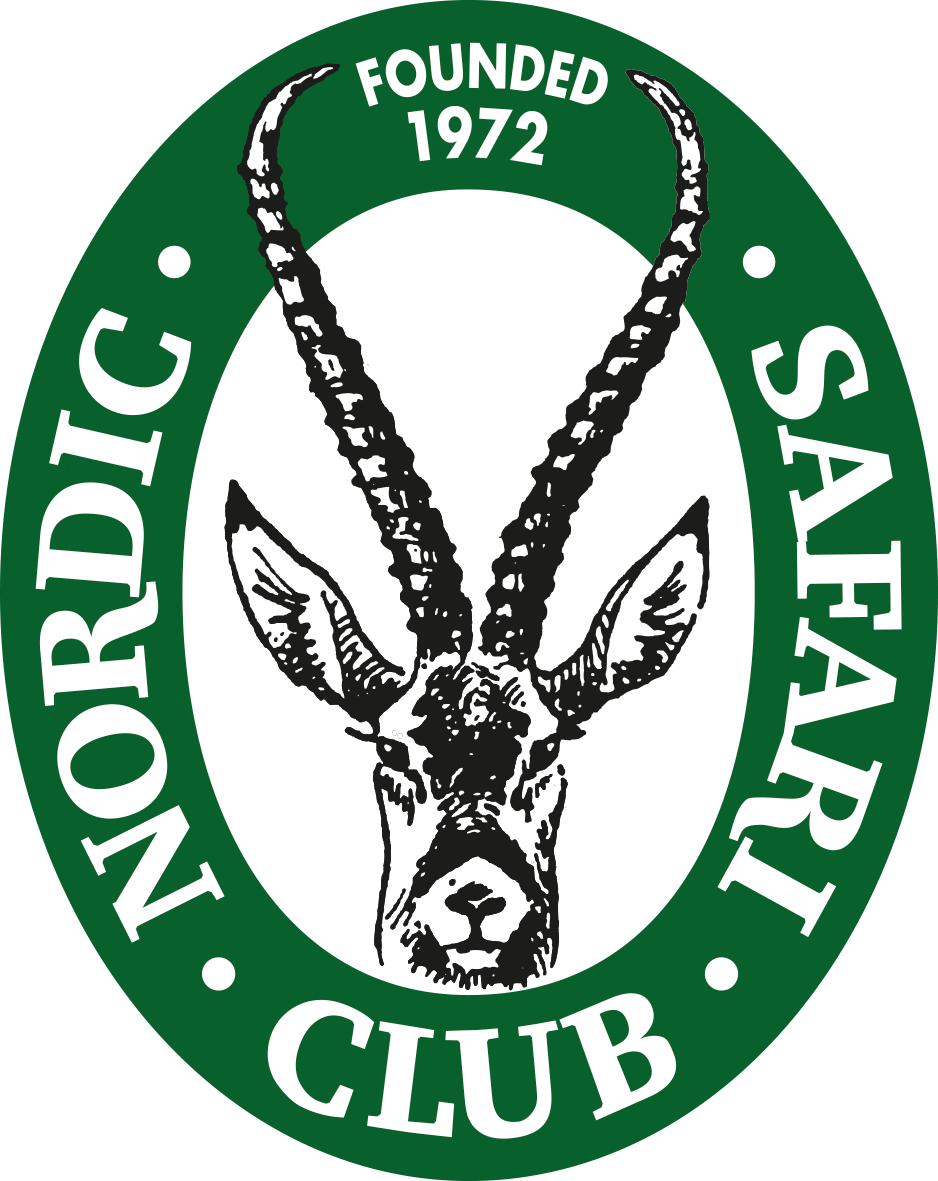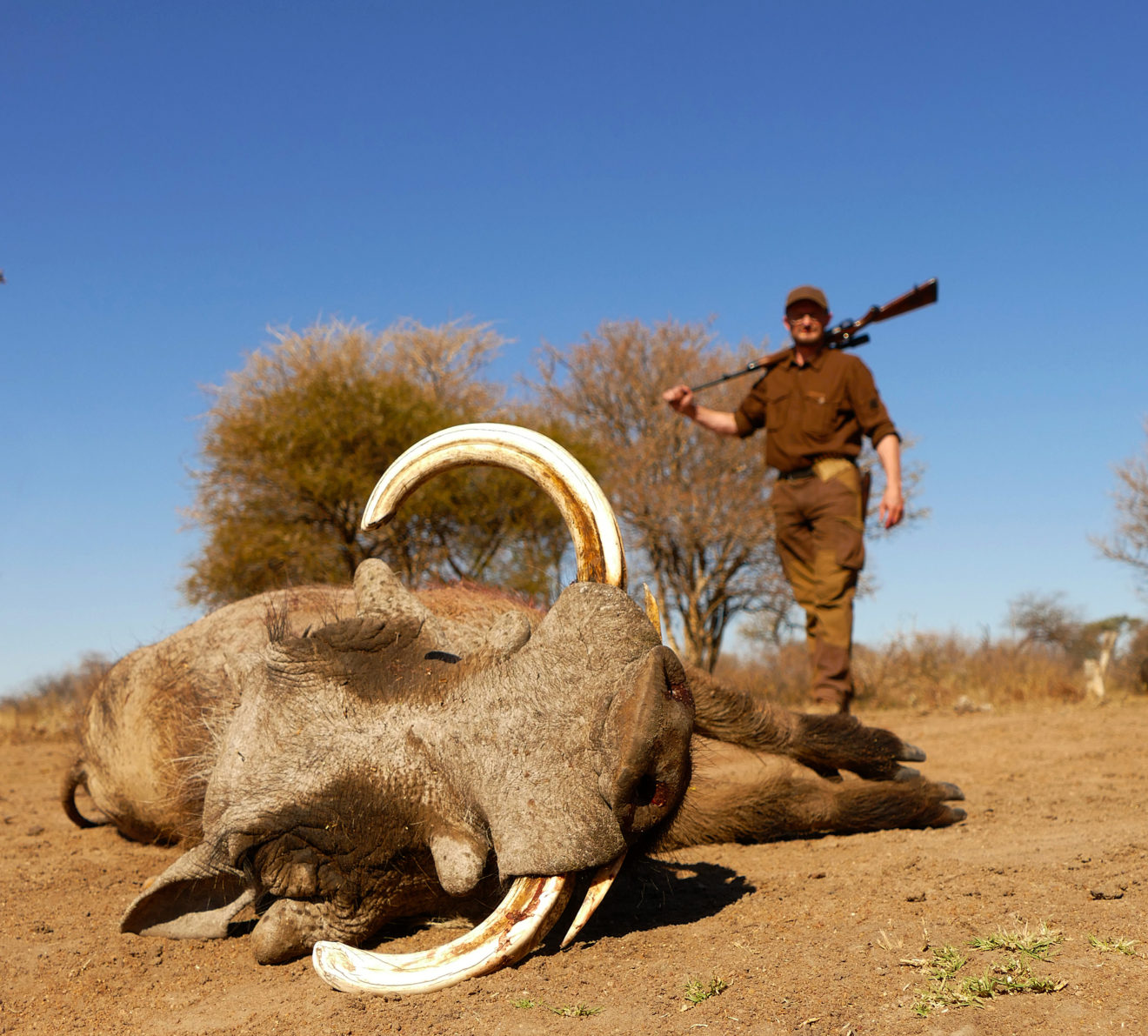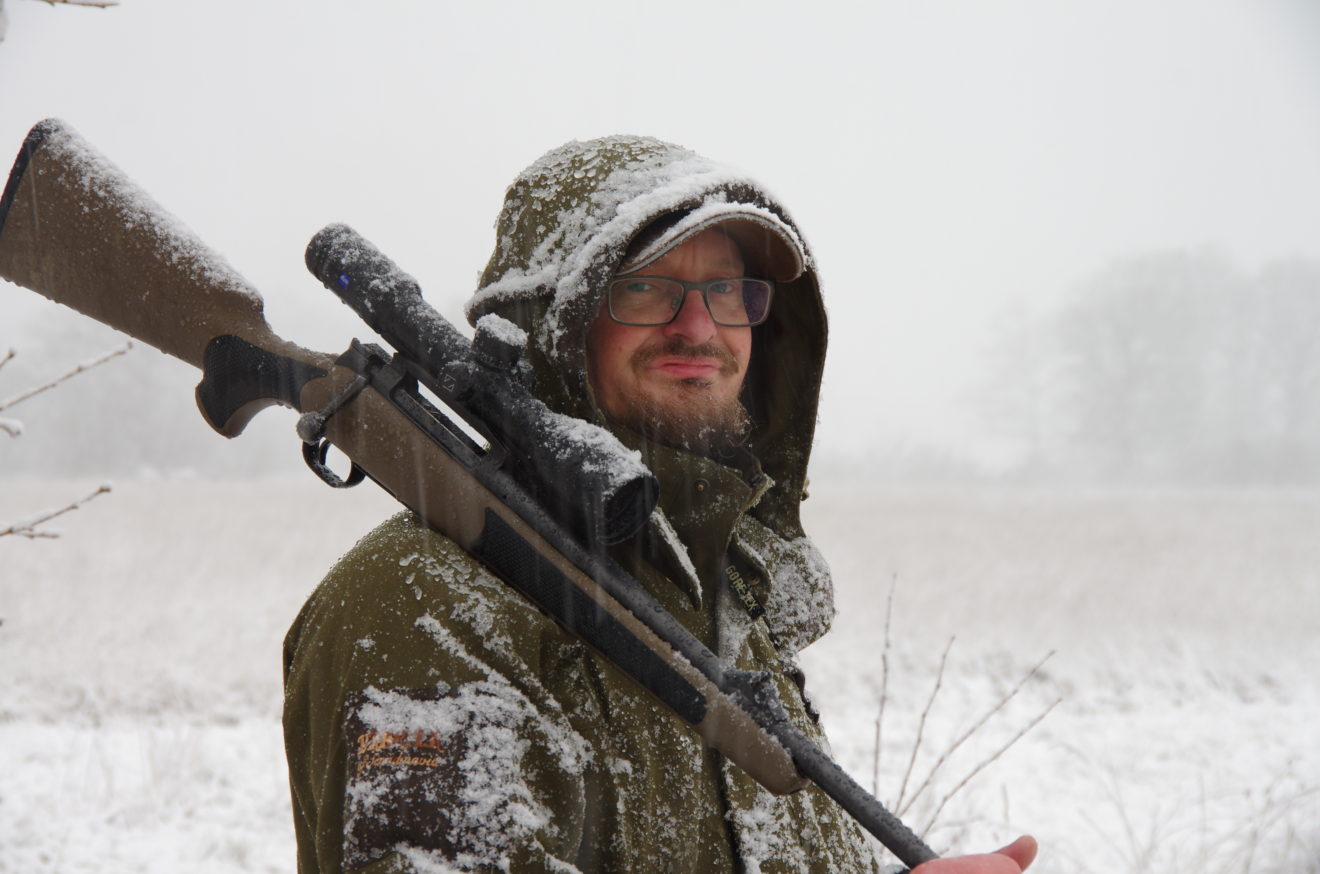Origins of Diehard Conservationist Jens Ulrik Høgh
The Communications Officer of the Nordic Safari Club has lessons to teach those of us in the hunting world who are fighting misinformation surrounding our sport. Jens Ulrik Høgh didn’t enter field sports in the traditional way. Hunting wasn’t passed down to him from his forebears – in fact, his father opposed hunting entirely. Yet, it was the struggles Høgh faced in his pursuit of outdoor sports that uniquely suited him for the challenges that lay ahead for the European hunting community.
Origins of a Conservationist
Originally from Denmark, Høgh was a teenager like many others in Northern Europe: watching subtitled John Wayne movies on television, spending time with friends, and developing hobbies and interests. But one of his interests particularly drew the ire of his father. One that resulted in hours-long discussions around the family dinner table, which, unbeknownst to him, became the proving ground for a future career.
“I don’t know how many thousands of hours of discussions I’ve had with the old man,” Høgh said of the back-and-forth that eventually gave way to a main-course-turned-visual-aid.
“I told him he was a hypocrite as long as we were having a meat dinner,” he said.
As a result of that conversation, his father turned vegetarian for many years, “and then after a few years, I caught him eating bacon and salami” — which his father dismissed as “more of a spice” and not so much meat.
It was those won and lost arguments that seeded his move to advocating for hunters across Scandinavia, and around the world.
“He really taught me to discuss this with people who do not like what we do, so he really did me a great favor,” Høgh said.
It must have been an amicable disagreement, as it was his father who helped his son start a short-lived hunting publication. The magazine, he said, was soon purchased by a German publisher that retained him as an editor. However, the publisher did not see things eye-to-eye with him in terms of management, so they parted ways.
Expanding the Heritage
Høgh’s exodus from the magazine led to a string of successful article submissions to other hunting and shooting publications. Originally all written in Danish, it was six years ago when Høgh began writing in English to expand his audience. He increased his audience by tenfold. Though not a native English speaker, he found the spelling and grammar checking features of word processing software gave him the edge. (Other international writers, he said, tend utilize translation software, but with awkward results.)
“The big advantage we have in Scandinavia is that our languages are so small, so we’re forced to learn other languages reasonably well,” he said, noting that English-language entertainment media serves as a coach for many in the Nordic region, and the subtitles on those old John Wayne movies only taught him so much.
“The Duke” invokes the image of a rifle-toting, rugged individualist who helped tame the American west who shot untold numbers of native wildlife in a time before conservation efforts ensured the proper care and management of herds and habitats.
“There are one-hundred-thousand generations behind us who are hunters — We all descend from good hunters,” Høgh said.
But a lot has changed since those pioneer days in America and in Europe. Nations once proud of their hunting traditions in Northern Europe are beginning to take a turn, he said.
“Now for the last two or three generations, we have this tiny, tiny subculture of people who do not like the idea that human beings are hunters. They basically not only want to ban hunting for the rest of us, but they also want to rewrite history — to just forget who we are, and what our human nature is all about.”
Technological advancement is part of the equation
“We are suddenly not apex predators anymore because we can all live without meat. But that’s only because we have genetically modified microorganisms working for us and big chemical plants producing those minerals that we do not get if we do not eat animal products,” Høgh said. “Ask any serious doctor: you cannot live without animal products unless you take some supplements, and you cannot produce those supplements without genetically modified bacteria.”
Høgh said it is an irony that people who oppose hunting rely so heavily on artificial production. “Everything is extremely artificial — it’s a plastic reality they wish to enforce on the rest of the world,” he said.
That cultural shift began in 2016 when Cecil the Lion was shot.
“That cat has cost the hunting community billions, and will continue to cost us billions. On top of that it has cost unknown animal lives for generations,” he noted.
Natural habitats are supported by revenue from the hunting industry whether by government-collected fees or pure philanthropy. Up until the Cecil situation — in which a dentist fell under intense scrutiny for shooting a 13-year-old Zimbabwean lion (that’s around 100 in human years) — international hunting activity was growing a modest rate. Now it has plummeted.
“Because this dentist shot a lion, thousands and thousands of lions have lost their habitats,” Høgh said.
Many countries responded to the Cecil media hype with import restrictions on lion trophies, which has in turn resulted in less revenue to protect natural habitats. Few voices from prominent safari clubs, Høgh recounted, were given the opportunity by the mainstream media to comment alongside anti-hunting activists. Many of these clubs even went dark to wait out the growing storm.
“We know now for sure that will not work,” Høgh said.
Smarter Communication
Since then, media bias, misplaced animal rights activism, corporate boycotts, and even social shunning have made an indelible mark on the reputation of trophy hunters.
“They’re attacking us in every imaginable way, to stop us from hunting, and fishing, and even owning our pets […] A lot of hunters simply do not dare to do a lion hunt because they are afraid of the repercussions on social media,” he said.
Høgh said trophy hunting still thrives in North America, thanks in large part to President Theodore Roosevelt’s foresight in reserving vast landholdings as national parks. The industry continues to thrive in South Africa and parts of Western Europe.
Keeping the voice of international hunters alive is key to the future of the industry, even if photos of hunters with their trophies are shared to anti-hunting social media groups to agitate armchair activists.
“Being a little smarter in our communication may be the best way forward,” he said.
Høgh continued: “Most social media storms originate from a bad trophy photo … The non-hunters need to understand why the person sitting behind this freshly-killed, bloody animal is grinning. That’s very difficult to explain. We need to think about how to market our passion and be a little more conscious about it.”
One social media practice he suggested is to render a trophy photo in black-and-white, which seems to allay criticism of the sight of red blood on a fallen animal. Avoiding beer, cigarettes, ostentatious clothing, and other items that lend an air of irreverence may soften the blow on social media.
Another helpful strategy involves telling the whole story of the kill on social media, not just a mere snapshot and comment. Showing multiple photos involving the carrying out of the animal, the processing for the meat, the work that went into locating it “tells the whole story … not that we jumped out of the car, shot it, and now we’re sitting there going ‘haha! … Even to the hunters, the reaction was entirely different. This is one of many small tactics to make it less offensive.”
Høgh suggests that media outlets pose the question to readers and viewers through surveys. In one situation, a tabloid publication’s survey found that over half of those who responded changed their minds after reading the article.
“We can actually explain our way out of this. If they let us,” he said.
Far away from the keyboard warriors with little understanding of the food chain, there’s a type of struggle hunters embrace: that of the expedition itself. The challenge of the very climate and terrain of an expedition is what keeps hunters going even amid recent social persecutions.
For Høgh, what began as teenage passion survived by nothing short of that same pioneering spirit that guided his ancestors and won the wild west across the Atlantic. Undaunted by language barriers, cultural differences, political oppression, or even disagreements with his father, Høgh has grown his hunting hobby into an international writing career and serves as an advocate for conservation and the preservation of a now-threatened way of life.
Rapid Fire: Final Questions
Favorite Caliber
Høgh’s thirst for adventure is reflected in his choice of rifle. He said it’s not the caliber or the model of rifle that is important; it’s about having an array of hunting rifles and a supply of ammunition ready to do what they’re designed to do — to shoot.
“I have hunted the most with a .300 Win Mag, so I have to say that,” he said. “I’ve tested literally hundreds of rifles, but the older I get, the more I realize it’s not really about the caliber … You wouldn’t hear me say that 20 years ago. But now I don’t really care whether it’s a 30.06, or a .308, or a .300 Win Mag.”
Least Favorite Caliber
The worst caliber of all, he said, “is the hardest one to get.” I really hate a caliber that you run out and you can’t get anymore he continued. “I had a 5mm Remington rimfire that I couldn’t get ammunition for, so I used it as a drift anchor for my decoys.”
Favorite Gun
While Høgh said the .300 Winchester Magnum is the top pick in his regular rotation, there is a favorite model he’s fond of: the Mauser 98, known as the grandfather of modern, bolt-action rifles.
One thing you can’t be without on a hunt
A good knife.
Most Memorable Hunt
Høgh’s most memorable hunt was to the Kamchatka Peninsula in Russia. The December weather dipped down to -36⁰ Celsius (-33⁰ Fahrenheit), but there were moose waiting to be bagged.
“It was very cold. We were successful, but that’s not the main reason I’ll remember that hunt,” Høgh said.
Crawling across a large portion of Deep Russia for three days on snowmobiles made for an adventure that would put even The Duke to shame.
Jeremy Mallette is co-founder of International Sportsman. An avid hunter and outdoorsman, he has spent more than a decade in the outdoor industry, from hiking and camping to silencers and hunting. His father taught him to shoot at age six, and he received his first firearm at age eight — a 1942 Colt Commando .38 special revolver. He enjoys yearly trips to Kansas for pheasant hunting, spending time with his children at the deer lease, and collecting unique firearms.





